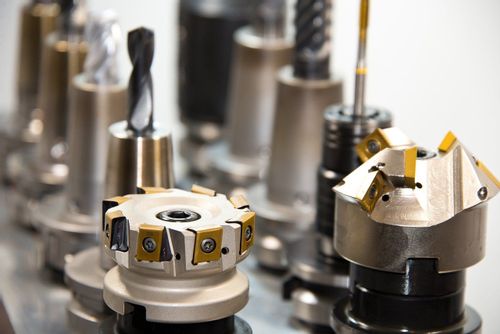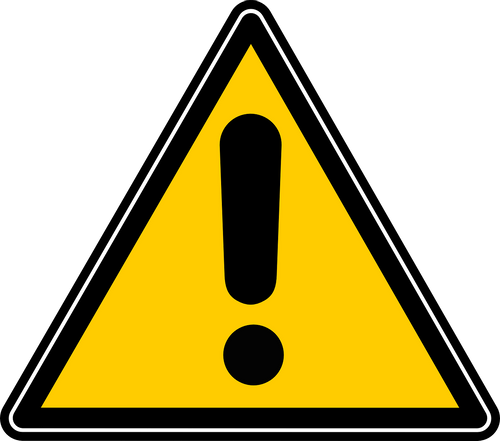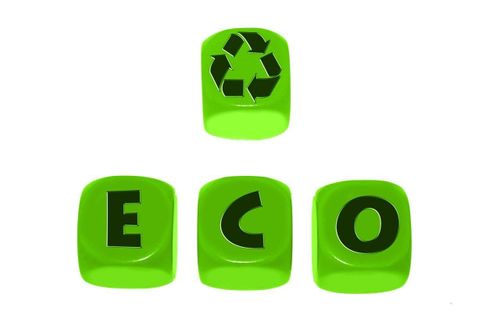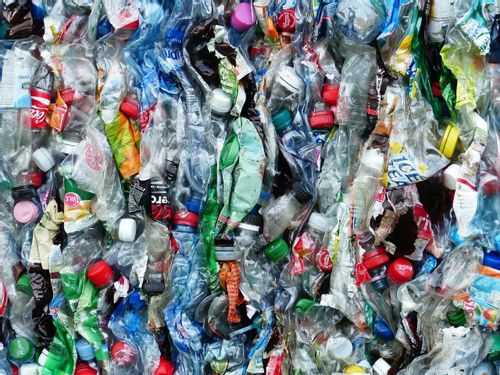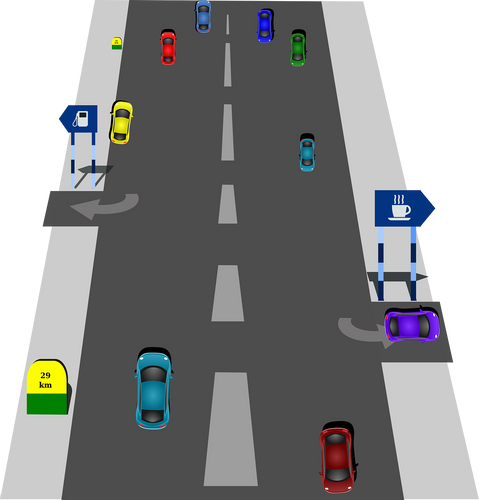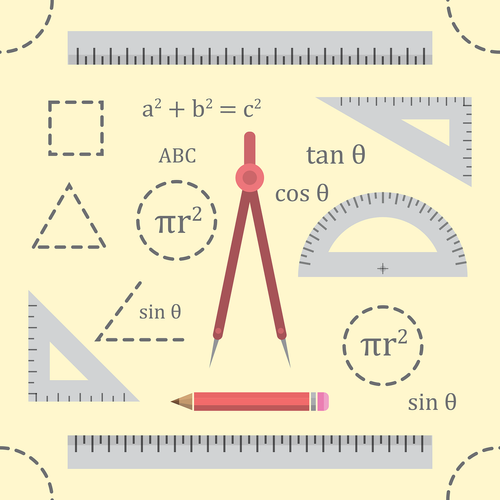Standards Packages
iTeh together with SIST has developed and compiled a comprehensive collection of standard packages to support your standard requirements. Our packages cover an array of content that includes quality management, risk management, road vehicles, machine safety, and much more. With over 200 packages to choose from, you are sure to find a collection to suit your standard needs.
Latest Standards
This document reviews the structural changes that have been precipitated by the COVID-19 pandemic in Remote Connected Care and Mobile Health (RCC-MH). The impact of the COVID-19 pandemic on care settings such as home and community care, acute care and outpatient care are reviewed discussing how well these healthcare environments were prepared to address the encountered connectivity challenges from a standards point of view. The current standards landscape is reviewed and gaps are identified leading to recommendations for future standards work.
- Technical specification101 pagesEnglish languagesale 10% offe-Library read for1 day
This document specifies a diantipyrylmethane spectrophotometric method for the determination of titanium in steel and iron. The method is applicable to titanium contents between 0,002 % (mass fraction) and 0,80 % (mass fraction).
- Standard12 pagesEnglish languagesale 15% off
- Standard12 pagesFrench languagesale 15% off
- Draft12 pagesEnglish languagesale 15% off
- Draft12 pagesEnglish languagesale 15% off
- Draft14 pagesFrench languagesale 15% off
This document specifies the methods of energy consumption measurement for the following type of industrial trucks as defined in ISO 5053-1:
— stacking high-lift straddle carrier (hereafter referred to as straddle carrier), as defined in ISO 5053-1:2020, 3.19.
- Standard13 pagesEnglish languagesale 10% offe-Library read for1 day
This document specifies the performance, maintenance and inspection requirements, and usage recommendations for equipment (eye pads/rings, magnetic or pneumatic systems, etc.) used to secure (bowse) pilot ladders, accommodation ladders and man-ropes to a ship hull when a combination pilot ladder arrangement is used for pilot transfer.
- Standard4 pagesEnglish languagesale 15% off
- Draft4 pagesEnglish languagesale 15% off
- Draft4 pagesEnglish languagesale 15% off
This document specifies measurement methods and conditions to obtain reproducible and comparable exterior noise emission levels and spectra for all kinds of vehicles operating on rails or other types of fixed track, hereinafter conventionally called “unit”. This document is applicable to type testing of units. It provides measurement procedures for vehicle exterior noise (in general, a vehicle type test is carried out using only a selected subset of these tests): — when the vehicle is moving at constant speed; — when the vehicle is accelerating or decelerating; — when the vehicle is stationary in different operating conditions. It does not include all the instructions to characterize the noise emission of the infrastructure related sources (bridges, crossings, switching, impact noise, curving noise, etc.). This document does not apply to — the noise emission of track maintenance units while working, — environmental impact assessment (collection of data to be used in a prediction method for environmental assessment), — noise immission assessment, — guided buses, and — warning signal noise. The results can be used, for example — to characterize the exterior noise emitted by units, — to compare the noise emission of various units on a particular track section, and — to collect basic source data for units. NOTE Additional guidance is provided in Annex E for measurements in the specific case of urban rail vehicles.
- Standard90 pagesEnglish languagesale 15% off
- Draft90 pagesEnglish languagesale 15% off
- Draft90 pagesEnglish languagesale 15% off
IEC 60122-2:2025 has been compiled in response to a generally expressed desire on the part of both users and manufacturers for guidelines to the use of quartz crystal units for filters and oscillators so that the crystal units may be used to their best advantage.
It draws attention to some of the more fundamental questions which will be considered by the user before it places its order for a unit for a new application, and in so doing will, it is hoped, help ensure against unsatisfactory performance, unfavourable cost and non-availability. It is not the function of this document to explain theory, nor to attempt to cover all the eventualities that can arise in practical circumstances. Lastly, it it is not considered as a substitute for close liaison between manufacturer and user.
Standard specifications, such as those of the IEC of which these guidelines form a part, and national specifications or detail specifications issued by manufacturers, will define the available combinations of the resonant characteristics and the temperature characteristic. These specifications are compiled to include a wide range of quartz crystal units with standardized performances. It cannot be over-emphasized that it is the responsibility of the user , wherever possible, to select the quartz crystal units from these specifications, when available, even if it can lead to making small modifications to the circuit to enable the use of standard resonators. This applies particularly to the selection of the nominal frequency.
This edition includes the following significant technical changes with respect to the previous edition:
a) addition of SC cut type and related requirements;
b) addition of ageing calculation and low level of drive requirements according to the general specification,
c) update of the frequency temperature curve according to the common cut requirements;
d) removal of infrequently used product types.
- Standard40 pagesEnglish languagesale 10% offe-Library read for1 day
- Amendment15 pagesEnglish languagesale 10% offe-Library read for1 day
IEC 60794-1-133: 2025 defines the test procedure to demonstrate the ability of an optical fibre cable to withstand multiple coiling and uncoiling on a specified diameter of cable reel.
This test is primarily intended to evaluate the performance of cables for mobile rapid or multiple deployment.
See IEC 60794‑1‑2 for a reference guide to test methods of all types and for general requirements.
This first edition of IEC 60794-1-133 cancels and replaces Method E33 of the second edition of the IEC 60794-1-21:2015/AMD1:2020, which will be withdrawn. It includes an editorial revision, based on the new structure and numbering system for optical fibre test methods.
- Standard15 pagesEnglish languagesale 10% offe-Library read for1 day
This document specifies general constructive and functional requirements and their test methods for granule applicator with regard to minimizing the potential risk of environmental contamination during use.
This document deals with all the significant environmental hazards related to the granule applicators.
This document does not deal with safety requirements for protection of the operator only.
NOTE General safety requirements are covered by EN ISO 4254-1:2015 and EN ISO 4254-1:2015/A1:2021.
This document is not applicable to granule applicators manufactured before the date of its publication.
- Standard15 pagesEnglish languagesale 10% offe-Library read for1 day
This document specifies requirements and recommendations regarding performance criteria for display systems in vehicles as a guideline for suppliers and manufacturers under normal operating conditions. This document applies to in-vehicle display systems designed to provide vital information to the driver and passenger. This document applies to the system as a whole as well as its relevant components, such as cover lenses, coatings, and properties of the device itself. This document covers display systems in passenger vehicles (including sport utility vehicles and light trucks) and commercial vehicles (including heavy trucks and buses). NOTE Static and dynamic laboratory testing and dynamic field operational assessment to measure display and cover glass attributes are also included, where available, in the scope of this document. This document is not applicable for: — technology and type of display device (e.g. LED, LCD, OLED); — manufacturing and handling of components in production; — electrical setup and integration into the vehicle; — EMC requirements for electrical subassemblies; — head-up display (HUD) and e-mirror displays [e.g. camera monitoring system (CMS)]; — behaviour in accidents besides the regulatory head impact test (HIT).
- Technical specification34 pagesEnglish languagesale 15% off
- Draft35 pagesEnglish languagesale 15% off
- Draft35 pagesEnglish languagesale 15% off
IEC 62657-2:2025 specifies:
– the fundamental assumptions, concepts, parameters, and procedures for wireless communication coexistence;
– specifies coexistence parameters and how they are used in an application requiring wireless coexistence;
– provides guidelines, requirements, and best practices for wireless communication's availability and performance in an industrial automation plant; it covers the life‑cycle of wireless communication coexistence;
– helps the work of all persons involved with the relevant responsibilities to cope with the critical aspects at each phase of life-cycle of the wireless communication coexistence management in an industrial automation plant. Life-cycle aspects include: planning, design, installation, implementation, operation, maintenance, administration and training;
– provides a common point of reference for wireless communication coexistence for industrial automation sites as a homogeneous guideline to help the users assess and gauge their plant efforts;
– deals with the operational aspects of wireless communication coexistence regarding both the static human/tool-organization and the dynamic network self-organization.
This document provides a major contribution to national and regional regulations by supporting to fulfil the requirements using coexistence management.
This edition includes the following significant technical changes with respect to the previous edition:
a) alignment of some definitions and specifications of coexistence parameters in order to facilitate their future inclusion in the IEC Common Data Dictionary (IEC CDD) maintained by the IEC;
b) alignment of some definitions and specifications to be consistent with the new IEC 62657-3 and IEC 62657-4;
c) edition 3 of this document was published in June 2022. Some comments were made in the last development stages of this document asking for explanations on how the parts of the IEC 62657 series were structured and how they were related to each other. Resolution of these comments was deferred until a next edition, which means this edition.
- Standard118 pagesEnglish languagesale 10% offe-Library read for1 day
This document provides guidance to organizations on how to identify, assess, resolve and monitor conflict of interest based on the principles of trust, integrity, transparency and accountability. The guidance in this document is generic and intended to be applicable to all organizations, regardless of type, size and nature of activity and whether in the public, private or not-for-profit sectors. It distinguishes between actual, apparent and potential conflict of interest.
- Standard20 pagesEnglish languagesale 15% off
- Draft25 pagesEnglish languagesale 10% offe-Library read for1 day
- Draft20 pagesEnglish languagesale 15% off
- Draft20 pagesEnglish languagesale 15% off
This document specifies the additional requirements to EN 81 20:2020 for new passenger and goods passenger lifts, which can be used to support faster evacuation of persons with disabilities, including in case of fire alarm.
This document does not apply to:
- lifts for evacuation due to circumstances which introduce other hazards such as explosion threat, chemical or biological attack, flooding, storm damage, or earthquake. In these cases, this document can be used as a basis with further measures as required from risk assessment;
- the provision of evacuation aids to assist when the evacuation lift is unavailable.
The significant hazards covered by this document are listed in Annex D.
The following significant hazards are out of the scope of this document:
- fire or smoke in the evacuation lift well, safe areas or machinery spaces;
- ingress of water to the lift well during evacuation process;
- insufficient or incorrectly located evacuation lifts;
- insufficient evacuation capacity;
- inability of users to understand the use of the lift in evacuation;
- entrapment in waiting area (safe area) due to absence of lift service or adjacent stairs;
- structural collapse or failure of building services (including public supply network, lighting, ventilation) before the evacuation using lifts has been completed;
- presence of harmful gases, potentially explosive atmosphere, extreme climate conditions, transport of dangerous goods;
- unavailability of the evacuation lift.
This document is not applicable to evacuation lifts manufactured before the date of its publication.
- Standard42 pagesEnglish languagesale 10% offe-Library read for1 day
This document specifies principles for determination of the thickness of metallic and non-metallic materials using the contact technique or immersion technique, based on measurement of the time of flight of ultrasonic pulses only.
- Standard42 pagesEnglish languagesale 10% offe-Library read for1 day
This document describes the ergonomic design criteria and test evaluation methods for the hand holes of handheld packages that are handled by human operators during the distribution and logistics process. This document is applicable to handheld packages with a maximum weight of up to 23 kg. This document does not cover all issues of safety, health, and the environment related to the handling of packages.
- Technical specification14 pagesEnglish languagesale 15% off
- Draft14 pagesEnglish languagesale 15% off
- Draft14 pagesEnglish languagesale 15% off
- Draft14 pagesEnglish languagesale 15% off
- Draft14 pagesEnglish languagesale 15% off
This document specifies the particular materials, manufacturing and testing requirements for stranded ropes for suspension, compensating and governor duties for traction drive and hydraulic lifts moving between guides and similar applications.
The particular hazards covered by this Part are identified in Clause 4.
This document does not establish requirements for information for use other than those given in Clause 7 of Part 1. Neither does it cover the requirements for ropes fitted with terminations.
Minimum breaking force values for the more common classes, sizes and grades of rope are provided in Tables 6 to 10.
- Standard20 pagesEnglish languagesale 10% offe-Library read for1 day
This document defines the core data set for a concise international patient summary (IPS), which supports continuity of care for a person and assists with coordination of their care. This document provides an abstract definition of a patient summary from which derived models are implementable. This document does not cover the workflow processes of data entry, data collection, data summarization, subsequent data presentation, assimilation, or aggregation. Furthermore, this document does not cover the summarization act itself, i.e. the intelligence, skills and competences, that results in the data summarization workflow. It is not an implementation guide that is concerned with the various technical layers beneath the application layer. Representation by various coding schemes, additional structures and terminologies are not part of this document.
- Standard76 pagesEnglish languagesale 15% off
- Standard83 pagesFrench languagesale 15% off
- Draft76 pagesEnglish languagesale 15% off
- Draft76 pagesEnglish languagesale 15% off
- Draft84 pagesFrench languagesale 15% off
This document specifies the methods for determination of the diameter and length of pellets. Concerning the pellet length, methods for the determination of fractions of specified lengths, such as pellets > 40 mm and particles
- Standard18 pagesEnglish languagesale 15% off
- Standard18 pagesFrench languagesale 15% off
- Draft16 pagesEnglish languagesale 15% off
- Draft16 pagesEnglish languagesale 15% off
- Draft18 pagesFrench languagesale 15% off
This document specifies requirements for calibration, verification and validation of equipment used for: — control of process variables during fabrication, — control of the properties of equipment used for welding or welding allied processes, where the resulting output cannot be readily or economically documented by subsequent monitoring, inspection and testing. This involves process variables influencing the fitness-for-purpose and in particular the safety of the fabricated product. NOTE This document is based on the lists of process variables stated in International Standards for specification of welding procedures, in particular, but not exclusively in the ISO 15609 series. Future revisions of these International Standards can result in addition or deletion of parameters considered necessary to specify. Some guidance is, in addition, given in Annex B for requirements for calibration, verification and validation as part of acceptance testing of equipment used for welding or allied processes. This document does not specify requirements to calibrate, verify and validate as part of inspection, testing, non-destructive testing or measuring of final welded products performed in order to verify product conformance. This document applies only to calibration, verification and validation of equipment for use in production or on site. This document does not apply to the manufacture and installation of equipment for welding. Requirements for new equipment are formulated in directives and product codes (standards), as necessary. Annex C provides information when other parties are involved in calibration, verification and validation activities.
- Standard29 pagesEnglish languagesale 15% off
- Standard34 pagesFrench languagesale 15% off
- Draft29 pagesEnglish languagesale 15% off
- Draft29 pagesEnglish languagesale 15% off
- Draft36 pagesFrench languagesale 15% off
This document specifies the determination of Cr(VI) in solid waste material and soil by alkaline digestion and ion chromatography with spectrophotometric detection. This method can be used to determine Cr(VI)-mass fractions in solids higher than 0,1 mg/kg. NOTE In case of reducing or oxidising waste matrix no valid Cr(VI) content can be reported.
- Standard25 pagesEnglish languagesale 15% off
- Standard27 pagesFrench languagesale 15% off
- Draft25 pagesEnglish languagesale 15% off
- Draft25 pagesEnglish languagesale 15% off
- Draft27 pagesFrench languagesale 15% off
Benefits

Full Standards Solution
Our catalog includes not only latest standards but also full meta information about related standardization project lifecycle.

Cost Effective
Our PRICE MATCH GUARANTEE policy with multi-level volume discounts gives our clients the best option in the market. In addition, you can get access to the standards for 3, 10, or 30 days.

Stay Notified
Get alerted to the latest revisions and new standards in the Weekly Newsletter. Standards are constantly changing. Don’t miss a revision that can impact your business.
About Us
iTeh Inc is a software development and IT consulting team of professionals who provide consulting, development and implementation of solutions for all types of businesses.
In cooperation, with the Slovenian Institute of Standardization (SIST), we create a unique solution that covers all aspects of the lifecycle of Standardization organizations. iTeh Standards is a part of the solution that helps SIST to provide and sell their products to Customers.
iTeh Standards Store is an evolving project, our goal is to build long-term relationships with our customers. We believe in delivering quality services to solve our customers' challenges and define success by exceeding our customers' expectations. We are always ready to listen and our experience allows us to provide our customers with helpful effective suggestions. You can contact us by email.
We are committed to providing the best possible experience for our customers.
Compliance with international standards is increasingly becoming one of the key competitive advantages in the global market. Our company creates all conditions for the most comfortable implementation of new documents and norms in the processes carried out by your organization. Some of the key advantages of working with us are:
- Cost-effective - multi-level discounts and permanent updates of the functions give our clients the best option on the market.
- e-Library - access to standards for a period of time of your choice. It is a cost-effective solution for keeping updated with the newest standards.
- Company-wide documents - create a company account and connect all employees with access to purchased standards, e-Library documents, and packages.
- All in one spot - all purchased standards are kept in one place with controlled access by the account administrator.
- Client-centric - providing quality consulting is the prerogative and incentive to create new products that accompany your success and scale.
- 24 / 7 client support
We are dedicated to building mutually beneficial and long-term relationships with our clients. That is why our team focuses on creating services to help our customers develop and achieve new productive results.










